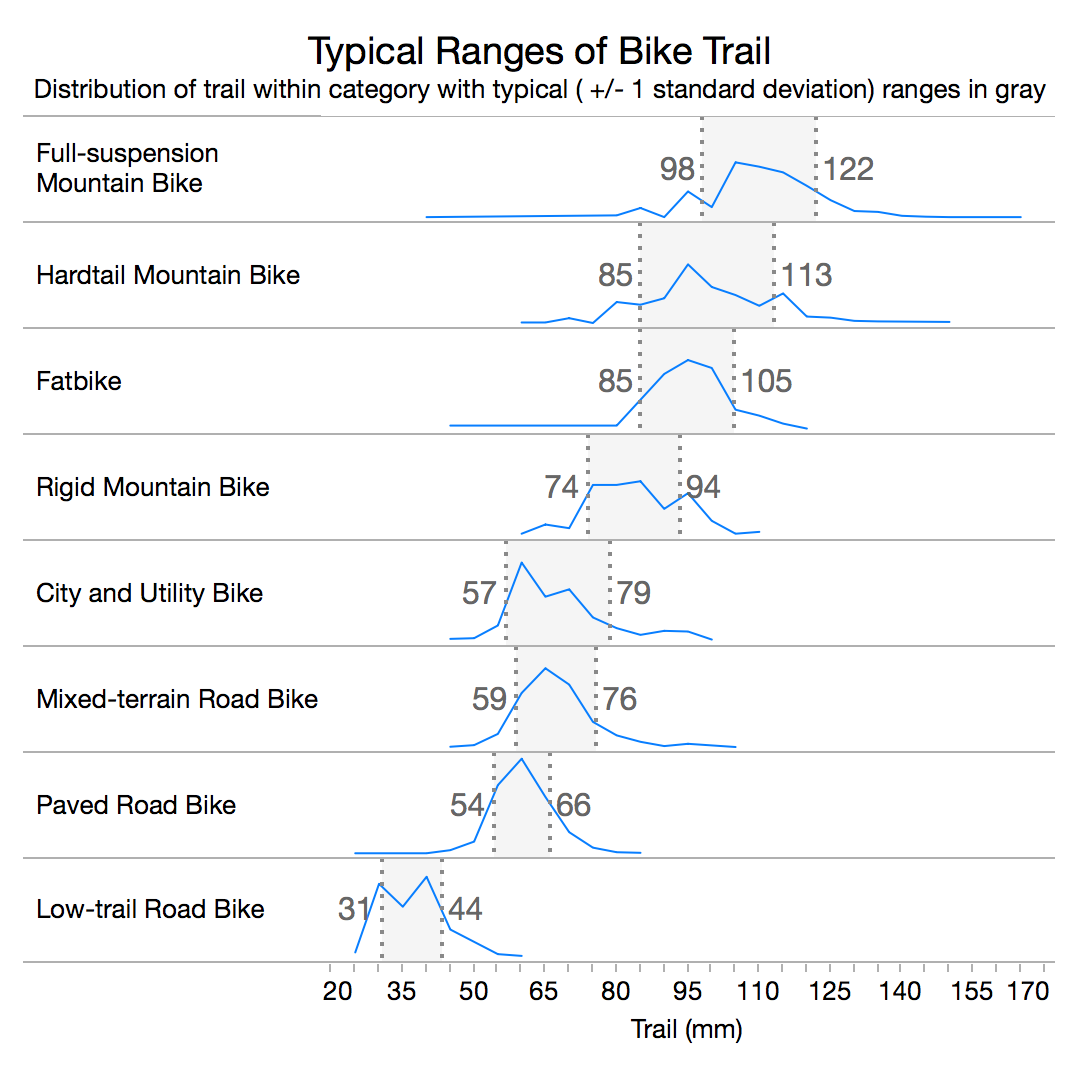Trail
Summary
Trail is the horizontal distance between the point where the steering axis of the front wheel intersects the ground and the point where the front tire contacts the ground. In this sense, the contact patch of the tire “trails” behind the steering axis. The greater this distance, the “higher” the trail and the lower the distance the “lower” the trail.
In general, mountain bikes have a higher trail figure (over 75mm) whereas typical road bikes have a trail figure between 55mm and 70mm depending on the expected riding conditions. “Low-trail” bikes, designed to carry cargo on the front of the bike, have a trail figure of less than 45mm.
Mechanical Trail (Front Normal Trail), describes the distance between the point where the front tire contacts the ground and the steering axis, measured perpendicular to the steering axis. Some consider this measurement to be superior to Trail because it is not skewed as Head Tube Angle slackens. Due to its infrequent usage in the industry, this article will use the more common Trail measurement.
What is Trail?
Trail is the distance between the point where the steering axis of the front wheel intersects the ground and the point where the front tire contacts the ground. In this sense, the contact patch of the tire “trails” behind the steering axis. The greater this distance, the “higher” the trail and the lesser the distance the “lower” the trail.
High trail can be achieved by slackening (decreasing) head tube angle, decreasing fork offset, or increasing the diameter of the wheel.
Low trail can be achieved by steepening (increasing) head tube angle, increasing fork offset, or decreasing the diameter of the wheel.
Why does it matter?
Despite rarely appearing in geometry tables, trail is one of the most important aspects of bike design because it directly affects the bike’s steering characteristics. For this reason, Bike Insights calculates trail for every bike, provided we have the required inputs: Head Tube Angle, Fork Offset, and Wheel Diameter or Rim BSD and Tire Width.
In general, bikes designed for off-road use have high trail figures whereas bikes designed for pavement have low to mid trail figures. A rider may prefer more or less trail based on cockpit configuration (handlebar width and reach), weight distribution (body or gear), or riding style.

Trail Ranges and Characteristics
Very High
> 80mm trail
High
65 - 80mm trail
Mid
45 - 65mm trail
Low
30 - 45mm trail
Inconsistent Trail
As a bike design is scaled down to fit smaller riders, Toe Overlap (the tendency for the rider's toes to catch on the trailing edge of the front wheel when wide turns are taken) can become a problem. One approach bike designers take to mitigate this is to slacken (decrease) the Head Tube Angle in order to push the front wheel out farther from the rider's toes. This increases trail and, in extreme cases, can result in compromised handling.
One quick way to check for this design compromise is to see if there is a sharp jump in trail on the smaller sizes of a bike model.
Resources
These comments are compiled from various sources to give an idea of what to expect from a trail figure. These ranges are also not precise, but the differences between ranges can help to give an idea for what to expect as trail figures move from one end of a range to another.
